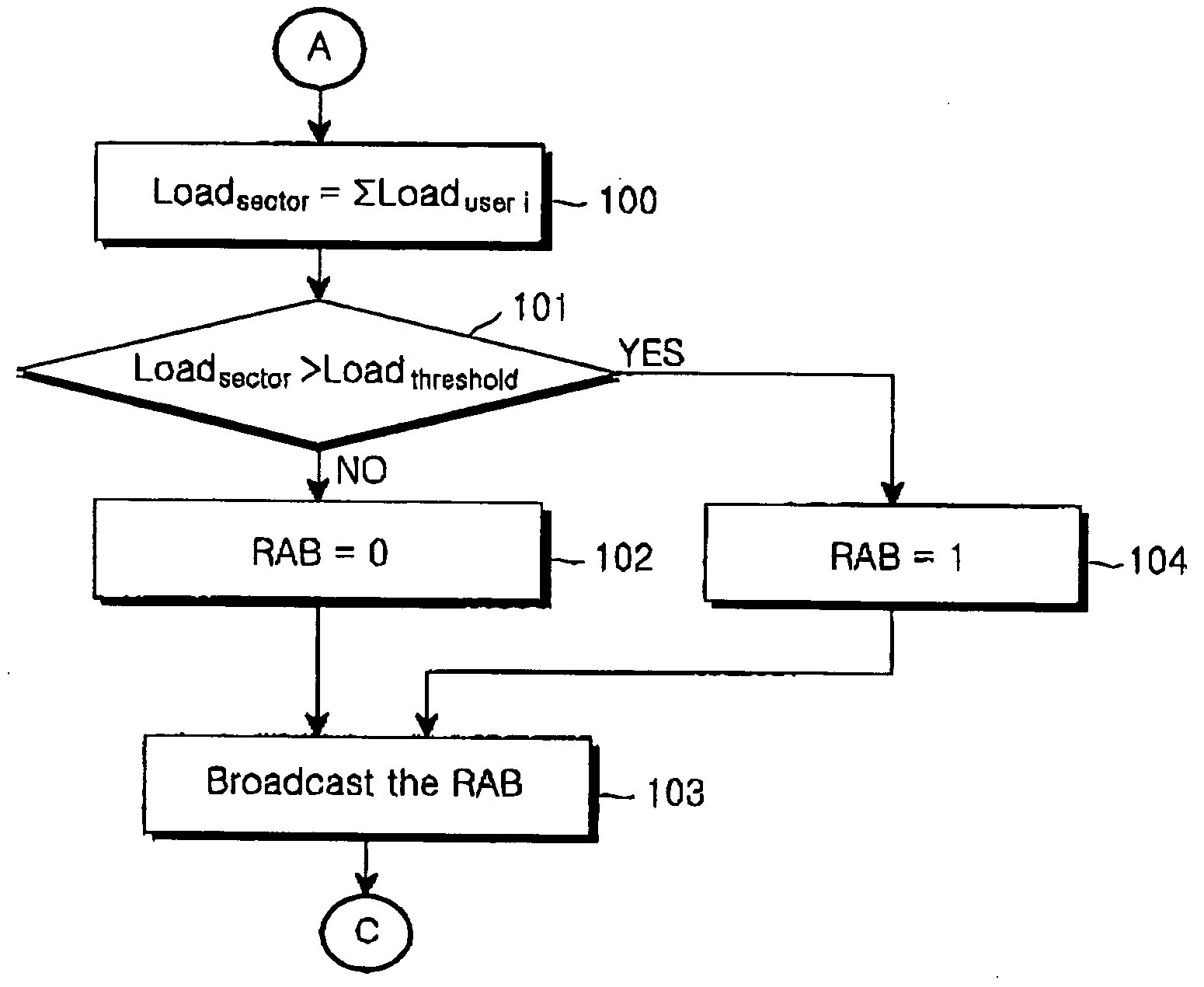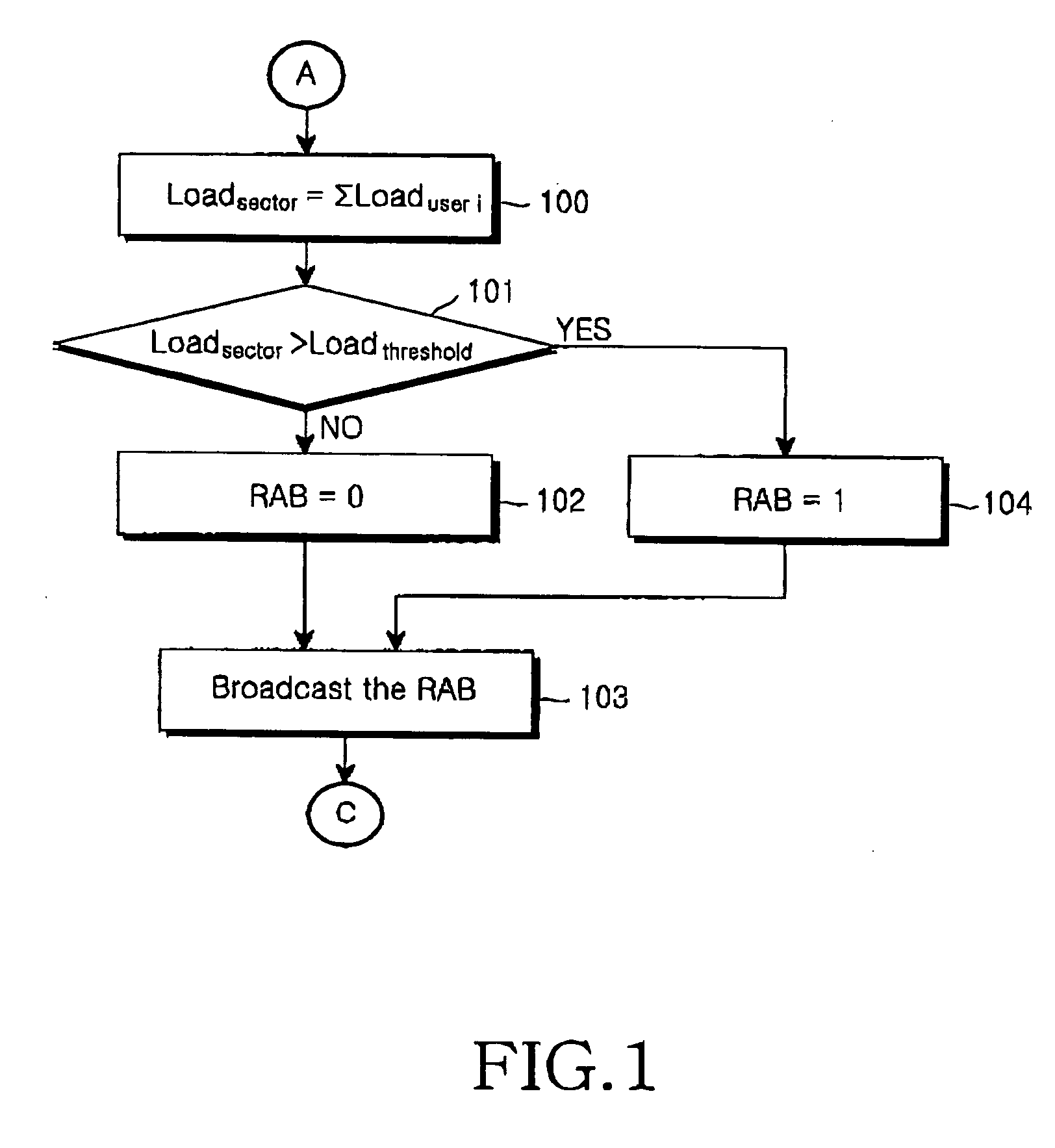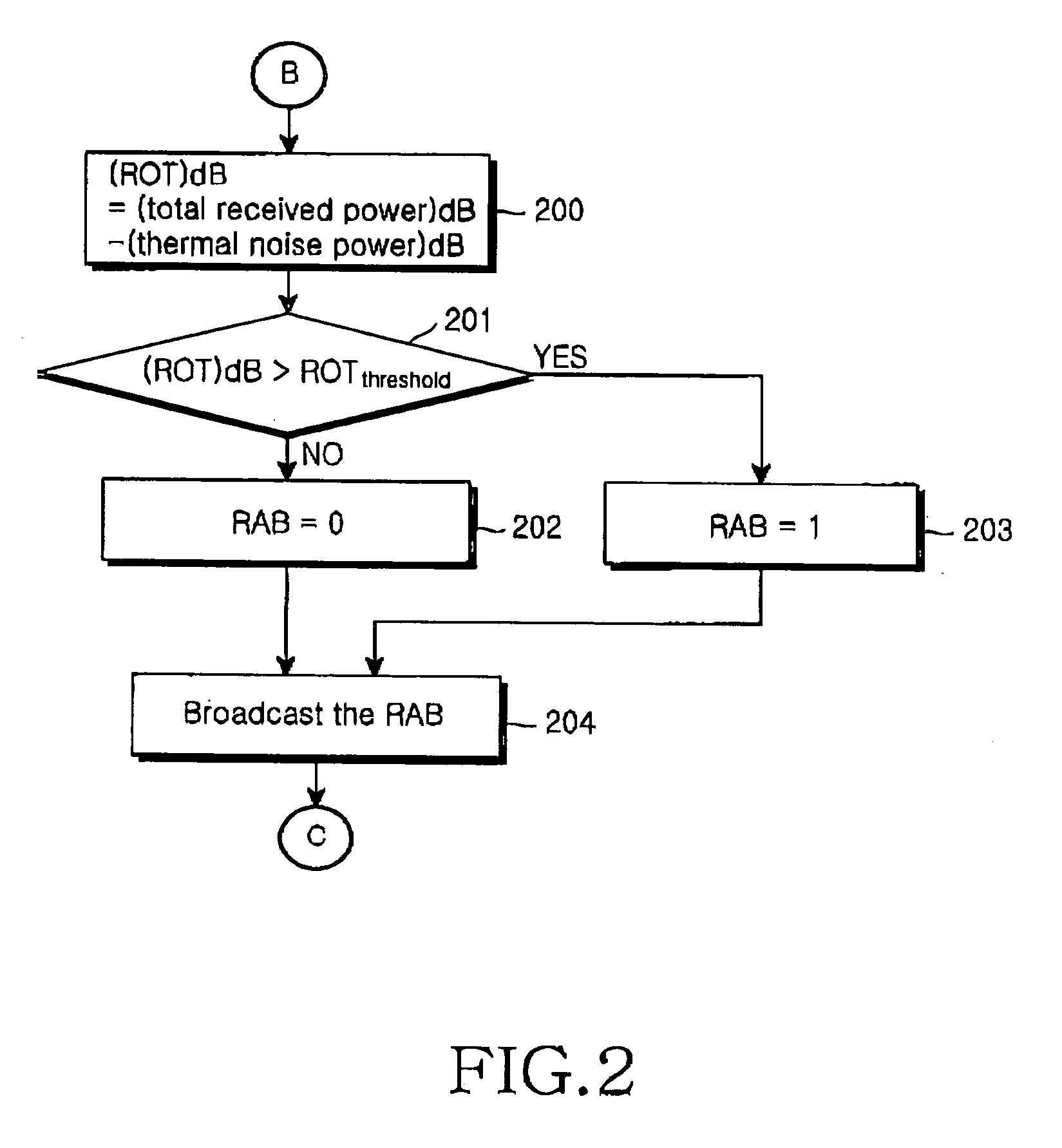Method for controlling a data transfer rate in a reverse link of a mobile communication system
a mobile communication system and reverse link technology, applied in the field of mobile communication systems, can solve the problems of inability of mobile communication systems to perform a new call assignment process, inability to enhance the data transfer rate of a previous call, undesirable effects, etc., and achieve the effect of reducing the data transfer ra
- Summary
- Abstract
- Description
- Claims
- Application Information
AI Technical Summary
Benefits of technology
Problems solved by technology
Method used
Image
Examples
Embodiment Construction
[0027] Embodiments of the present invention will now be described in detail with reference to the accompanying drawings. In the drawings, the same or similar elements are denoted by the same reference numerals even though they are depicted in different drawings. In the following description, a detailed description of known functions and configurations incorporated herein will be omitted for conciseness.
[0028] An embodiment of the present invention calculates a load value on the basis of an Rise Over Thermal (ROT) value determined by received power and thermal noise power, a reference channel received from a channel card, and a data transfer rate, compares the load value with a predetermined reference threshold value, and selects one of a load-based method and an ROT-based method, such that it can determine the presence or absence of a reverse link overload or an assignable data transfer rate using the selected method.
[0029] Also, an embodiment of the present invention controls a d...
PUM
 Login to View More
Login to View More Abstract
Description
Claims
Application Information
 Login to View More
Login to View More - R&D
- Intellectual Property
- Life Sciences
- Materials
- Tech Scout
- Unparalleled Data Quality
- Higher Quality Content
- 60% Fewer Hallucinations
Browse by: Latest US Patents, China's latest patents, Technical Efficacy Thesaurus, Application Domain, Technology Topic, Popular Technical Reports.
© 2025 PatSnap. All rights reserved.Legal|Privacy policy|Modern Slavery Act Transparency Statement|Sitemap|About US| Contact US: help@patsnap.com



